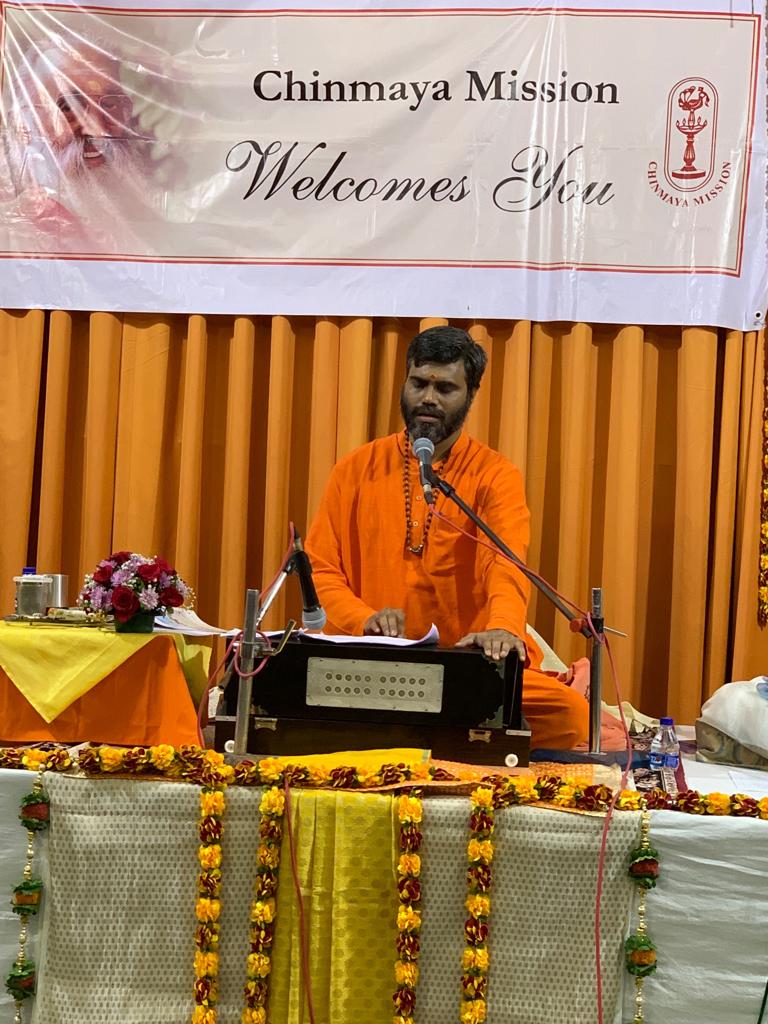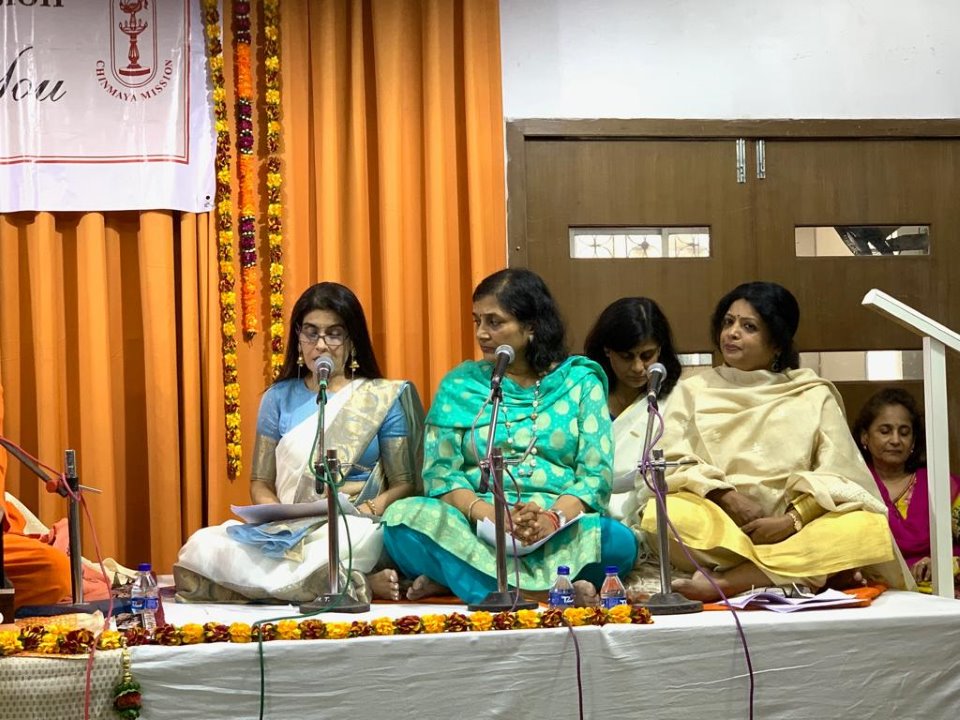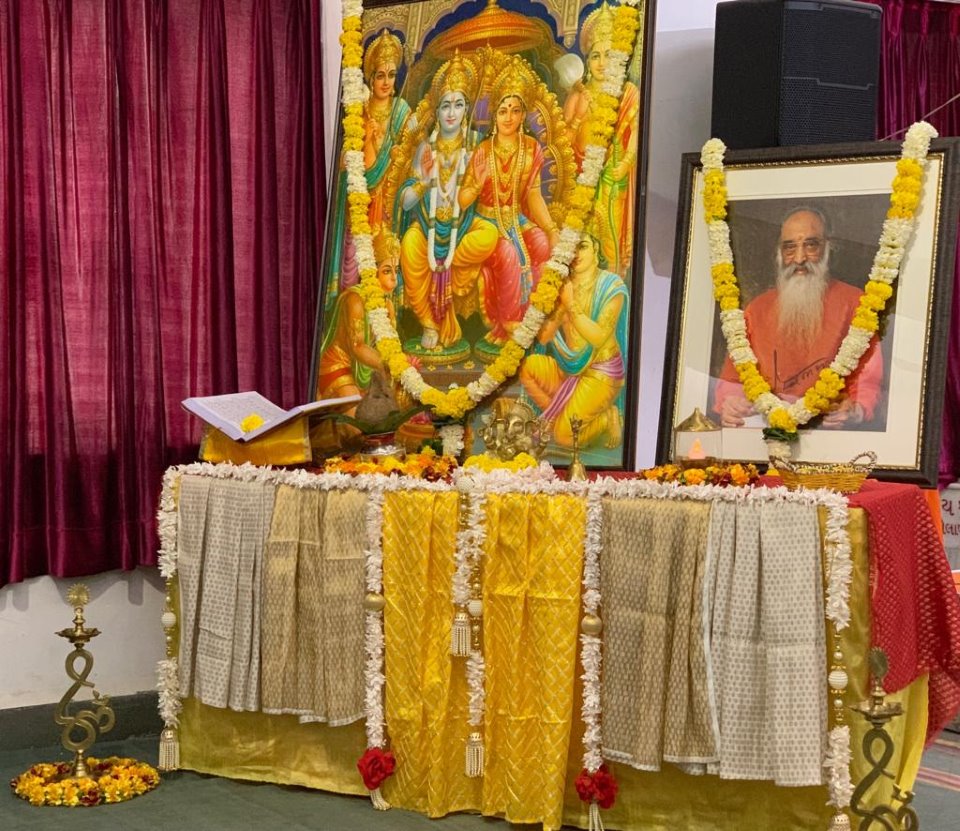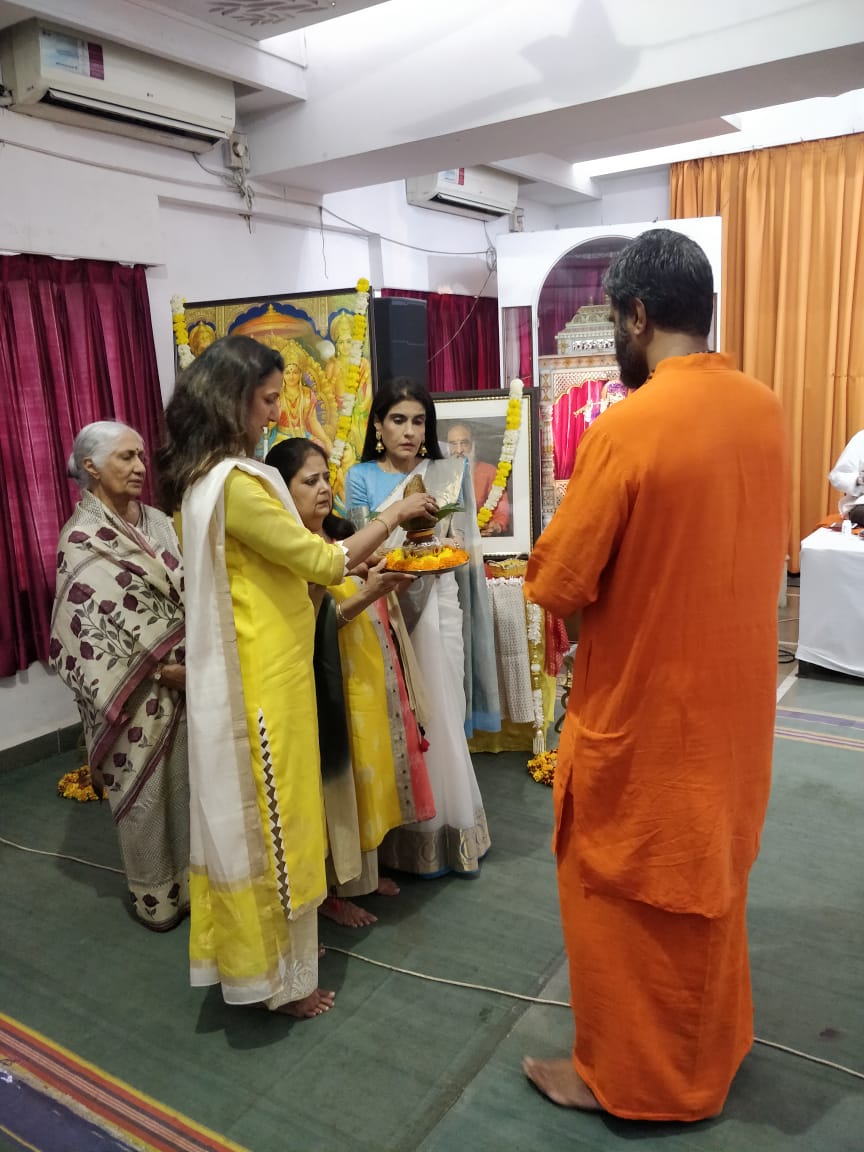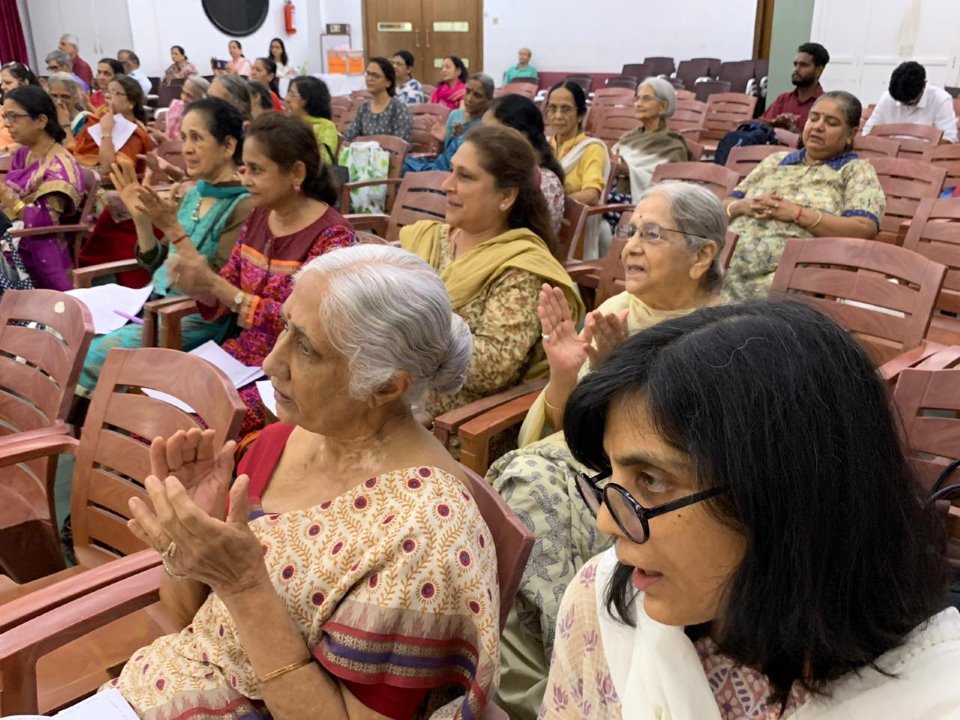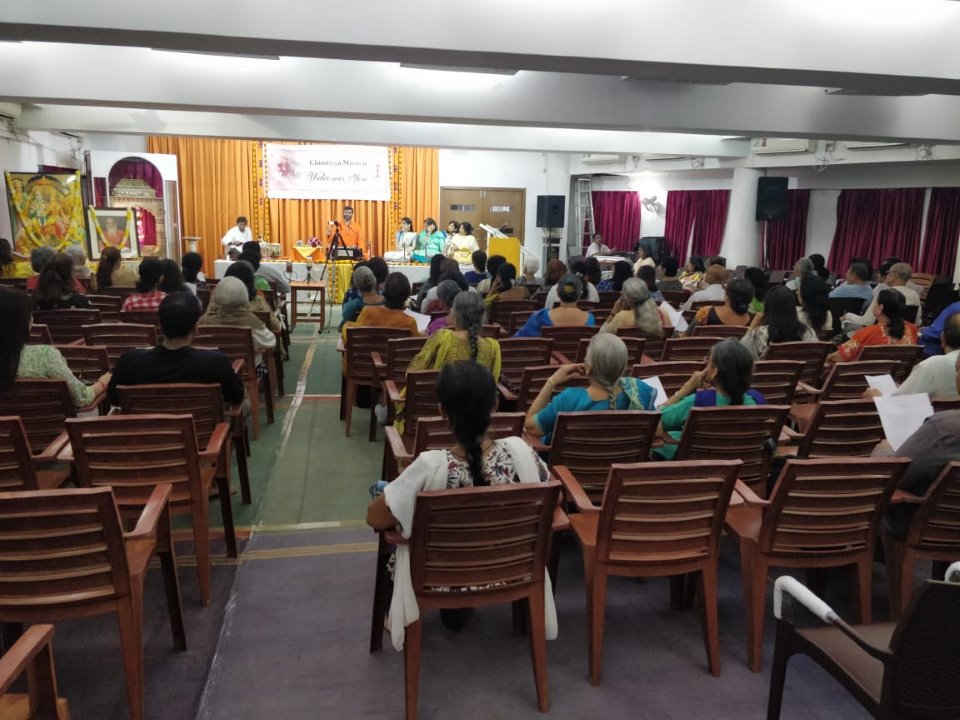Day 1
Aranyakand of the Tulsi Ramayan is soaked with verses on bhakti. As Swami ji explained, bhakti yoga is to love the Lord eternally and bhakti means investing your love in the Higher.
Citing the example of Shabari Mata, Swami ji expounded the nature of Guru bhakti & Ishwar bhakti.
Shabari's shraddha in her Guru, Matanga Rishi who had told her that if she did the japa of Shri Ram's name, He would come and steadfastness in in her sadhana bore fruit and the Lord came to her.
Lords seeks love and humility in his devotees which, Shabari had in abundance.
Keep the company of sants is the first gem of bhakti as given by Lord Ram. In their company our doubts, disillusionment is removed.
Satsang- is keeping the sang of sat, Atma which is eternal truth & awareness of it expresses as 'I am.'
The Lord has many forms but our focus should be on only one form which we should identify as our ishta devta & surrender to it completely.
Thus, the first session ended, with a peppy bhajan by Sant Tukaram and the Ram aarti.
Day 2
Taking the explanation further, Sw. Sughoshananda ji said that Satsang is the first form of bhakti.
The second is hearing the stories of the Lord's leelas and to never miss an opportunity to do so especially if a Sant is narrating them because these stories have the power to give us Mukti, e.g. Parikshit Maharaj and Dhundhukari.
Third is to worship one's Guru's lotus feet devoid of pride and ego and walk the path shown by Him.
Lotus is a symbol beauty which grows in a pond of mud but remains pure and untouched by the dirt. Similarly, a Sat Guru is the one who remains unaffected by the dirt of society in which He lives.
Worship His feet.
Bhakti is like a mother who accepts each child with living and open arms. Therefore, any and everyone is an adhikari for Bhakti.
The talk, sprinkled with witty jokes, bhajans and anecdotes held the attention of the audience.
Day 3
Continuing today, Sw. Sughoshananda ji said that after Satsang, hearing the stories of His Leela, seva of one's Guru without abhimaan comes the forth type of bhakti - Singing the glories of Bhagawan without any 'kapat'.
Fifth is doing japa of His name with unwavering faith. Japa has immense strength.
Here Swami ji expounded by giving an example from a verse from the Hanuman Chalisa - "prabhu mudrika meli mukh mahi; jaladhi langh gaye achraj nahi."
The Lord's mudrika had 'Ram' engraved on it (symbolizing Ram naam). Hanuman ji kept it in His mouth (symbolizing japa) and crossed the ocean - jaladh (the sea of Samsara) without any difficulty.
This is the glory of japa!
Sixth is 'dama' or sense control 'sheel' good character, controlled action and dignified behaviour.
Seventh is seeing Him in everyone and everything - Oneness in All
The eighth form of bhakti is contentment. Being happy with what you have and not look for faults in others (removing dosha drishti)
The last, one is simplicity and humility.
Out of these nine, even if we internalize one Bhakti, the Lord says that that person becomes dear to Me!
